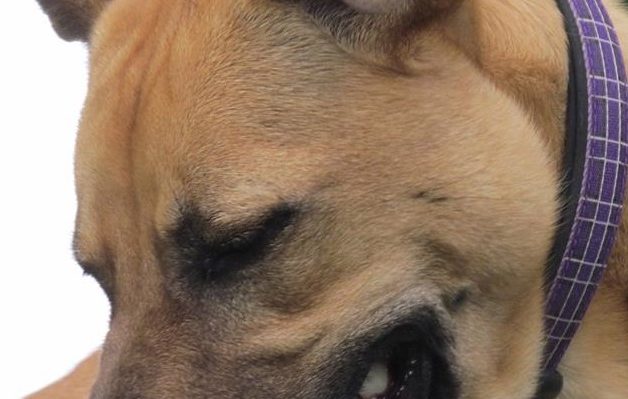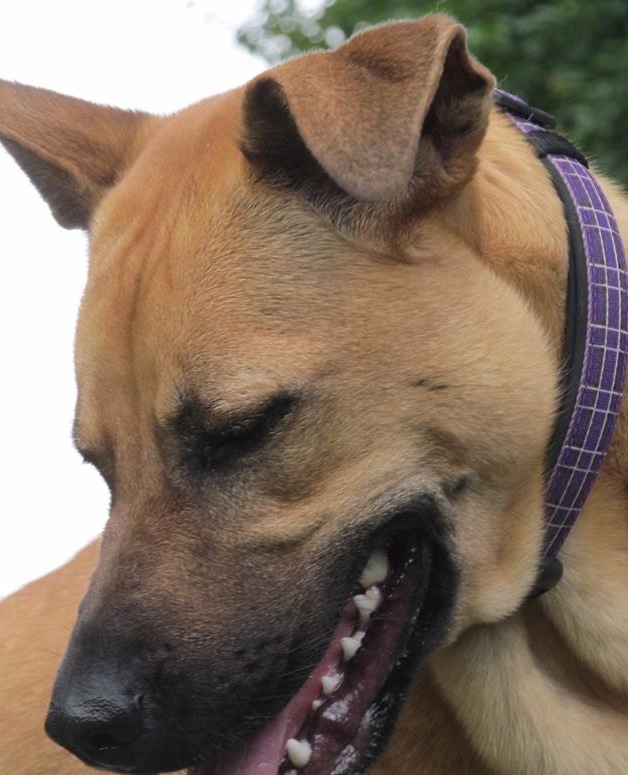
How’s your dog doing with Doggy Zen? Does she seem to understand that trying to get a treat by taking it away from you is not the way to get the treat? Has she realized that, to get the treat, she must not try to get the treat? Good! It’s time to take what she’s learned from Doggy Zen and apply it to one of the most useful behaviors you can teach her: Leave It.
“Leave It” means (to the dog): don’t pick it up in your mouth, don’t touch it, don’t go closer to it. Stand back from “it,” whatever that “it” may be.
In practice, “Leave It” is most often used with food items or objects like tennis balls or particular toys that are eagerly wanted by the dog. After much practice and success, “Leave It” can move into “Drop It”—cueing the dog to let go from her mouth anything that may be in her mouth. For example, on a walk, my dog nabs an empty sandwich wrapper and I want him to spit it out. That would be a “Drop It” (because I was obviously not paying close enough attention to what he was doing to ask him to “Leave It” before he picked the wrapper up).
Once the dog gets the concept of “Leave It,” you will find it useful in many ways. You and your dog are waiting in line at an outdoor café, where she will get a biscuit and you will get a coffee drink. In the line near you is a group of children with their parents. One little kid is holding a dripping ice cream cone . . . right at your dog’s eye level, only a few feet away. You know your dog. You see her ears perk and her nose wiggle. You know she’s watching that ice cream and you know she wants some!
You look down at your dog, maybe say her name to get her attention, and quietly cue her: “Leave it!” Her posture changes, she turns to you expectantly, all thoughts of ice cream gone because . . . you reward her! Out of your pocket appears a juicy treat, maybe her favorite home-cooked chicken breast, let’s say. She knows darn well that you can limit her access to that little kid’s ice cream cone. She’s on a leash! She also knows, from all the practice, that if she leaves the cone alone, she will be rewarded—and so she is. To your dog, the ice cream cone is only a distant possibility, very, very unlikely, while the reward for a “Leave It” is a sure thing . . . home-cooked chicken breast. She can’t pass that up! She can earn chicken every time she Leaves It!

Doggy Zen to Leave It can be an easy transition, as long as you stay honest with yourself about how far along your dog really is in the process. Doggy Zen ultimately results in your being able to hold your palm open when showing the dog the treat that she’s not supposed to try to get. No cue, but simply the expectation that your dog will not try to get the treat. If your dog is still “deciding” whether it’s worth it or not to leave the treat safely in the palm of your hand—if your dog even one time out of ten tries to get the treat—then you must go back a few steps, not forward. Don’t build on a shaky foundation.
Okay. You can hold a treat in your open palm, with you and your dog in a variety of postures, situations, locations? Your dog never tries to get the treat? Yes! It’s time to start transitioning to Leave It—slowly and surely, not haphazardly. The first time you see your dog “deciding,” go back a few steps and work at a less stressful, more successful level for a while longer. You want Doggy Zen, not trying to get the treat, to be your dog’s default position. If it isn’t yet, she needs more practice of Doggy Zen.
Teaching “Leave It”
Environment: no verbal cues, neutral body language on your part, no distractions, safe location.
- Instead of holding the treat in your hand, put it on the floor right next to your foot.
(If you are for any reason unable to use your foot, do this part of the training seated, with the treat on your knee right next to your hand.)
- Dog moves toward treat? Put your foot on the treat.
- Dog scratches at your foot? (Yup, you should be wearing old shoes with good coverage.) Keep your foot on the treat.
- Dog tries every move possible to get to the treat? Your foot remains firmly planted on it.
- Dog stops trying.
- Pick up your foot.
You’d imagine that your dog would pick up on this foot-instead-of-hand version of Doggy Zen very quickly, but that’s not always the case. Don’t be surprised if she offers other behaviors at first. Be prepared to withstand any physical onslaughts that your puppy may offer, especially scratching or biting at your shoes! You’ll see the light bulb go on eventually, but don’t get hurt in the process.
It’s at this point that you might consider adding a cue that tells the dog it is okay to get the treat (at the point, of course, she stops trying to get it). That makes sense to me, because it helps communicate more clearly with your dog. I suggest you try saying the word “Okay” quietly and calmly at the very moment you see that your dog has backed off trying . . . the exact second that it is okay for the dog to get the treat.
At first, there’s no reason your dog should understand the “Okay” cue, but keep using it with good timing and she will. In this case, “Okay” is a release cue, telling the dog that it’s okay to end the behavior she was performing.
I also recommend that the more advanced your training is with Doggy Zen and Leave It, the more often you should throw the dog’s treats away from yourself (in a random direction) every time you reward—close to you at first, then farther away, then a variety of distances.
By sending the dog after the treat, you “reset” for every repetition. The dog must place herself back in front of you to have another opportunity. You’ll be able to tell instantly if your dog is not “in the game” because she won’t come back for another try. (That means it’s time to figure out why!) As you throw the treat, you might want to use a cue like “Get It” instead of “Okay”; it’s an excellent opportunity to introduce that cue to your dog’s vocabulary.
Sometimes when you throw treats to “reset” for another repetition, the treat will get lost. At my house, it’s always under the refrigerator, since I do a lot of play-training in the kitchen. The only way to handle that bobble is to instantly provide another treat and, if you can’t get to the “lost” treat, go practice somewhere else if your dog is too distracted in that location. You always owe the dog a treat when she’s earned one!
- Doggy Zen—Dog never tries to get the treat from your hand.
- Treat on floor—Use foot to cover if dog tries to get treat.
- Throw treats—to “reset” dog for another opportunity.
- “Okay” cue—when it’s okay for the dog to get the treat.
- “Get It” cue—when dog “gets” the earned treat, then “resets.”
Next week: moving from the treat under your foot to more advanced Leave Its.



